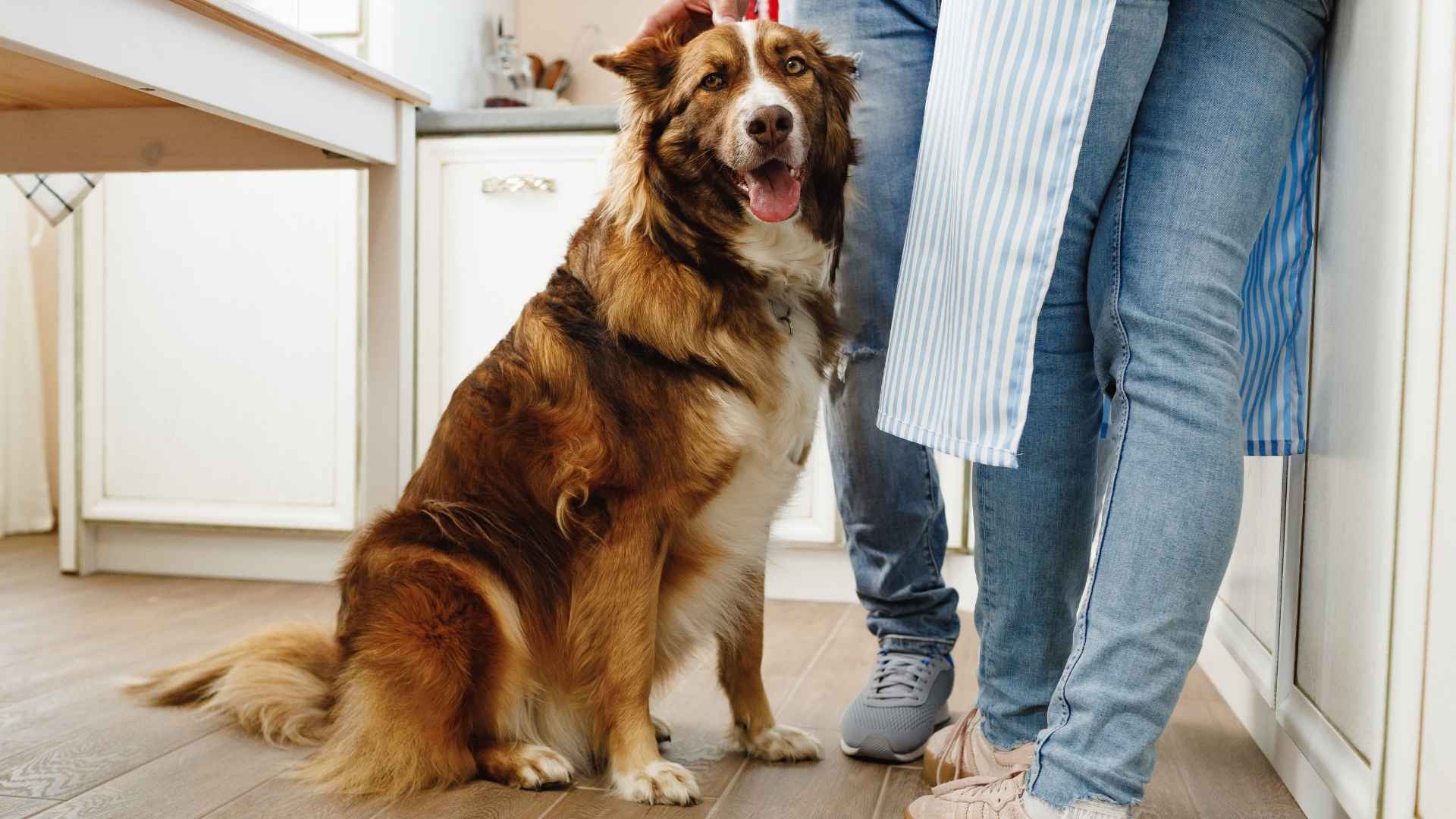Few things warm a pet parent’s heart like a loyal dog trailing them from room to room. For some breeds, companionship isn’t just part of their personality—it’s their entire purpose. These affectionate pups don’t simply enjoy being around their humans; they thrive on it.
Whether you’re heading to the kitchen, sitting in the living room, or moving from one task to another, they’re right there with you, ready to join in or simply keep watch.
This behavior is often affectionately called being a “Velcro dog,” but for some breeds, it’s more than a nickname—it’s a defining trait. They seek constant closeness, forming deep attachments and offering unwavering loyalty in return. Sometimes, this devotion is endearing; other times, it’s a challenge, especially when they struggle with even brief moments of separation.
For those who crave a furry shadow in their daily life, these breeds are the ultimate companions. They’re not just pets—they’re family members who refuse to let you face a single moment alone, turning ordinary routines into shared experiences full of love and connection.
Dog Breeds That Follow Owners From Room To Room
1. Vizsla
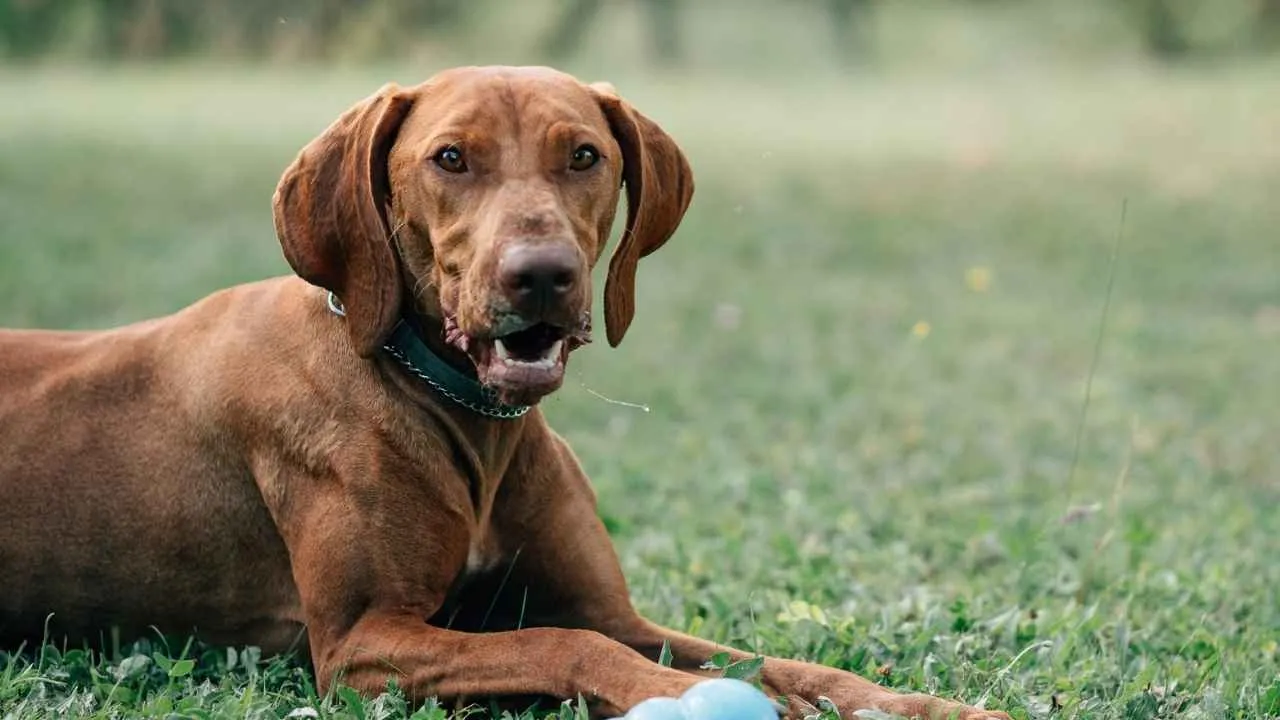
The Vizsla, also known as the Hungarian Vizsla or Magyar Vizsla, is an elegant sporting breed that dates back to the Middle Ages in Hungary, where it worked alongside nobles as both a pointer and retriever.
Standing 21–24 inches tall and weighing 44–60 pounds, these reddish-gold dogs are as athletic as they are affectionate, often earning the nickname “Velcro Vizslas” for their tendency to shadow their owners from room to room.
With a life span of 12–14 years, they are prized for their loyalty, intelligence, and strong desire for human connection—traits that make them both outstanding companions and highly trainable family pets. The AKC states that the Vizsla is instantly identifiable by its smooth, golden-rust coat.”
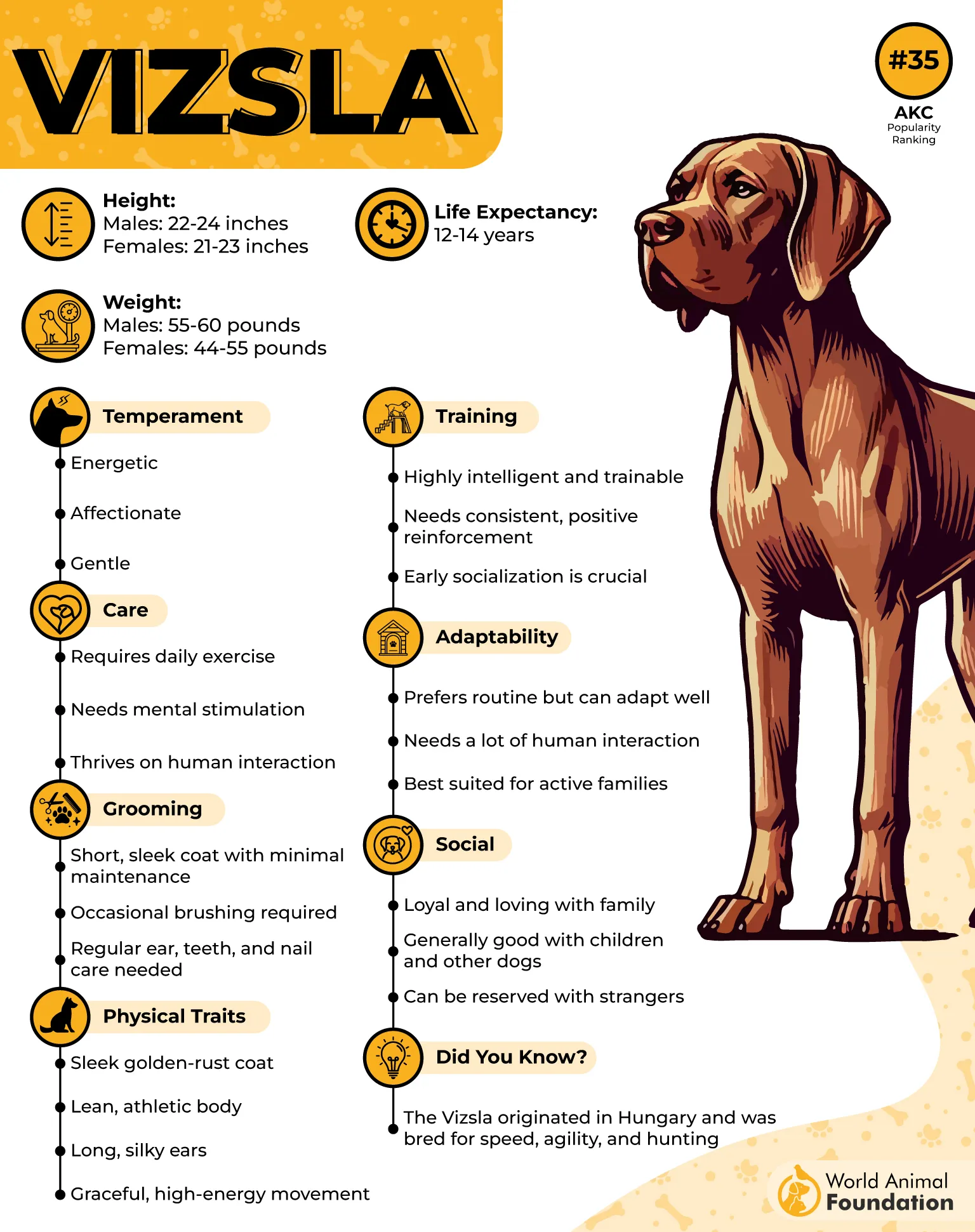
Care Needs
Vizslas thrive on daily activity and emotional engagement, requiring plenty of exercise such as jogging, hiking, or agility work to burn off their boundless energy. They are sensitive dogs that respond best to positive reinforcement training and consistency, as they crave structure and closeness.
Mental stimulation is just as important—interactive play, obedience sessions, and even scent games help keep them balanced. Grooming is minimal thanks to their short coat, but regular brushing maintains their shine.
Did you know? The Vizsla was once called the “Gift of Kings,” and only royalty could gift them to those outside Hungary—a tradition that helped spread the breed worldwide.
2. Doberman Pinscher
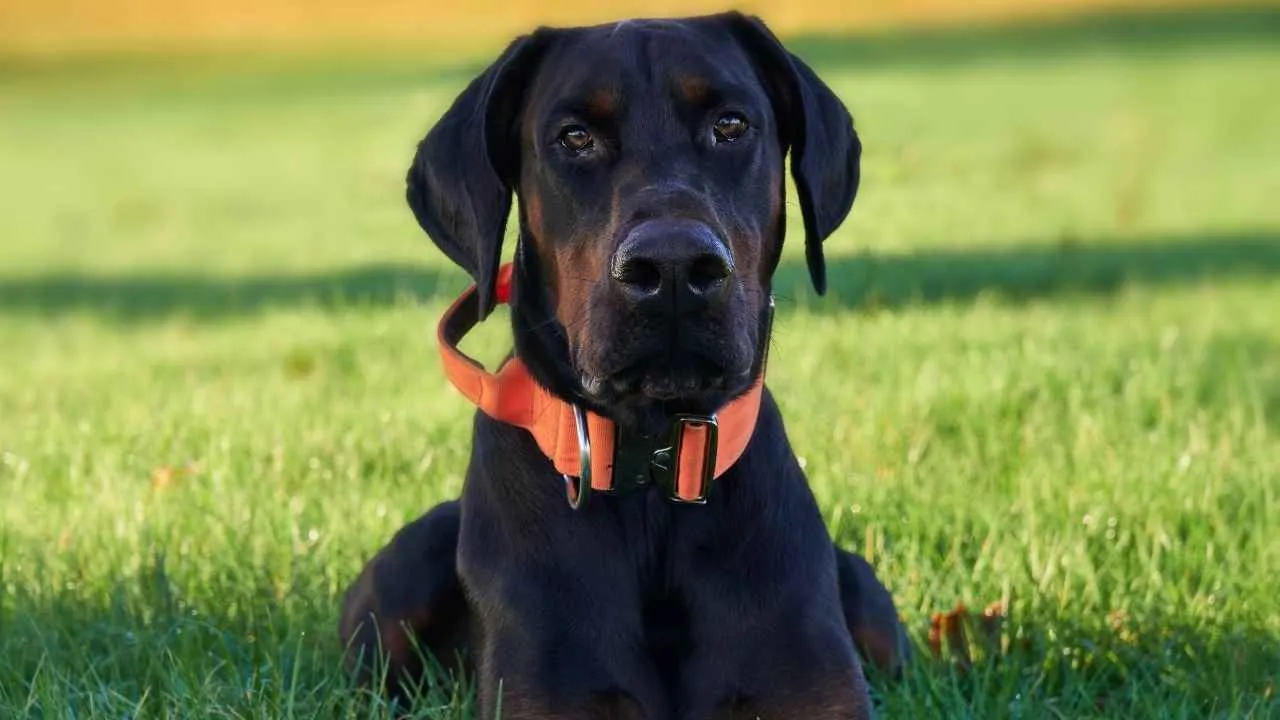
The Doberman Pinscher, also called Doberman, Dobie, or Dobe, is a striking breed originating from Apolda, Germany, around 1890. Bred by Karl Friedrich Louis Dobermann for protection and companionship, these dogs belong to the Working Group.
WebMD reports that male Doberman Pinschers typically stand 26 to 28 inches tall and weigh between 75 and 100 pounds, while females usually measure 24 to 26 inches and weigh 60 to 90 pounds.
Their sleek, muscular frame, short coat in black, blue, fawn, or red with rust markings, and naturally alert demeanor make them both elegant and powerful. With an average lifespan of 10–12 years, Dobermans are renowned for loyalty and intelligence, often forming incredibly deep bonds with their families.
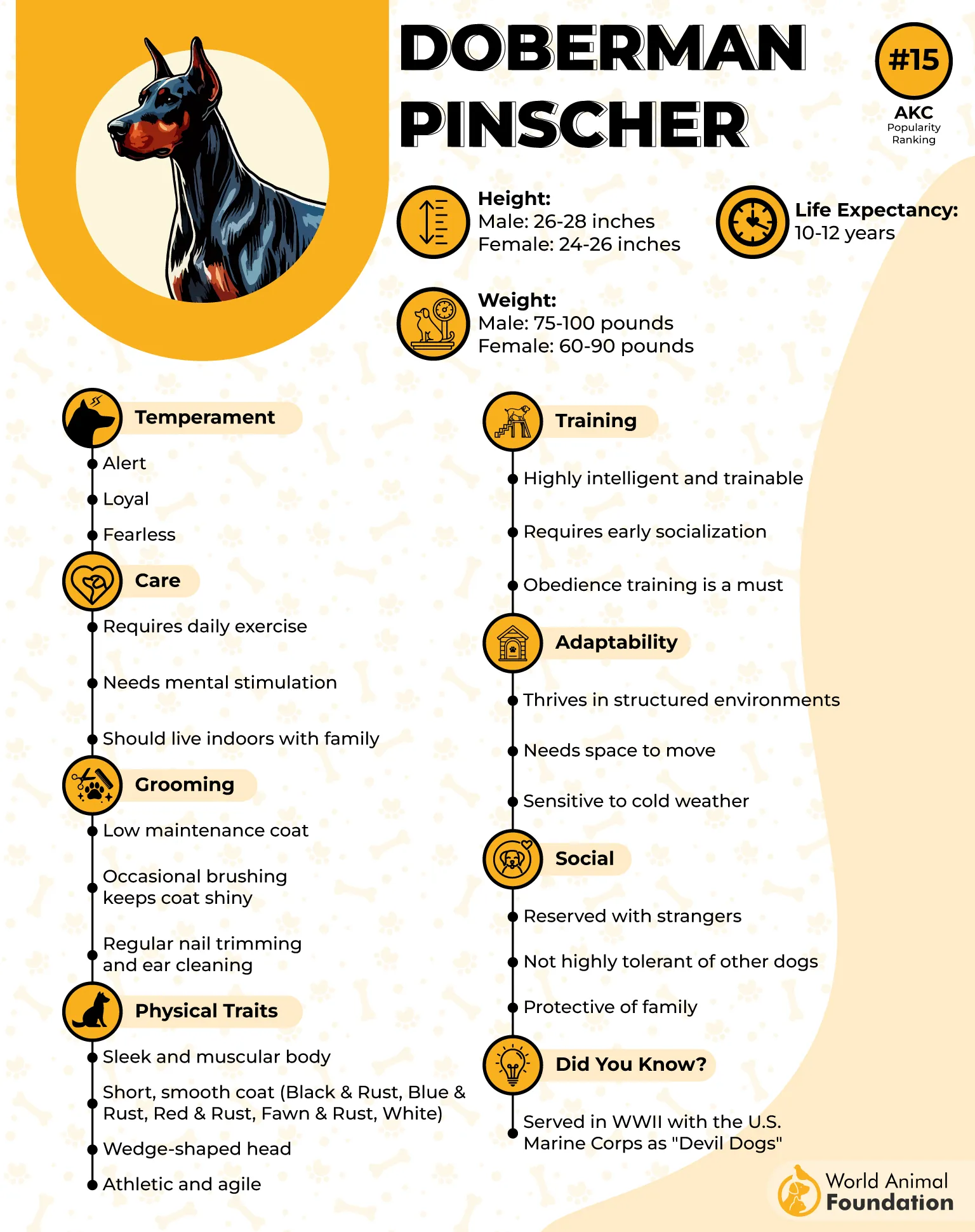
Care Needs
Dobermans thrive when they receive consistent mental and physical stimulation, as their working-dog heritage demands purpose and structure. Advanced obedience training is essential to keep them healthy and focused.
Because they bond so closely with their humans, they can develop separation anxiety if left alone too long, making early socialization and positive reinforcement training crucial. Their short coat requires minimal grooming, but regular health checks are wise, given the breed’s predisposition to certain conditions like cardiomyopathy.
Did you know? A Doberman named Kurt was the first of 25 war dogs killed during the Battle of Guam in 1944 and is honored with a bronze memorial at the National War Dog Cemetery.
3. Italian Greyhound
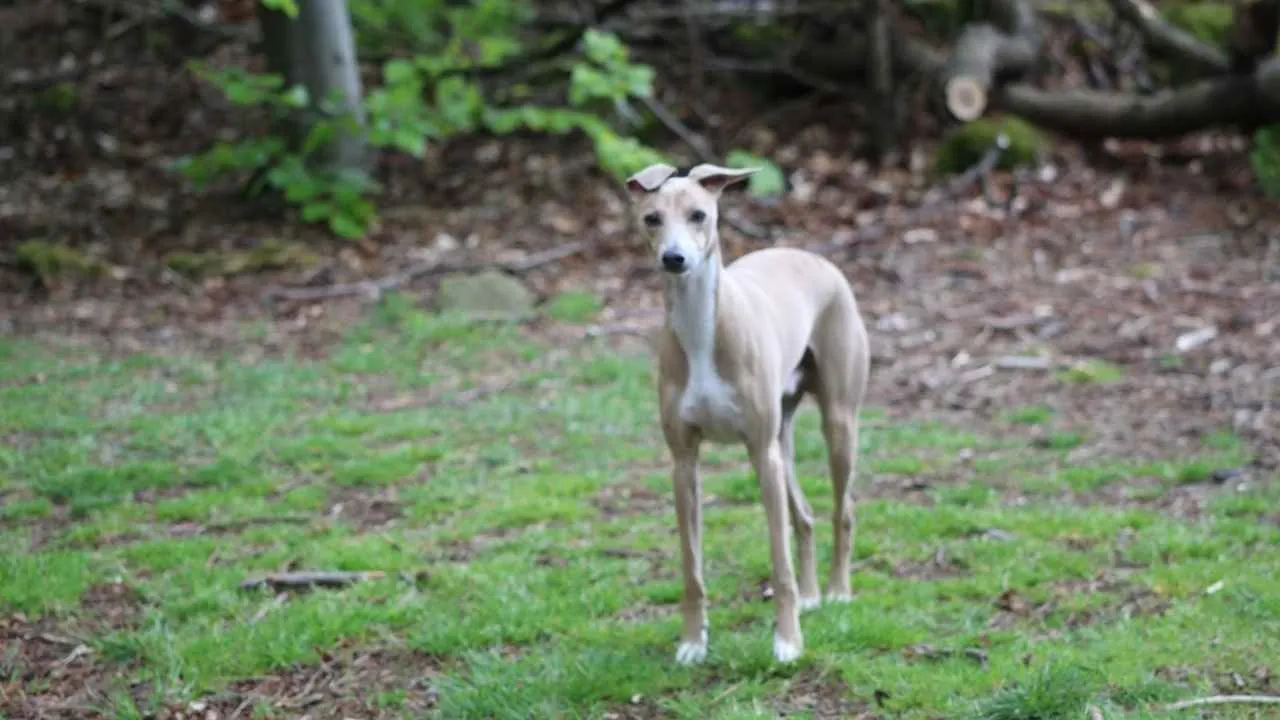
The Italian Greyhound, affectionately known as the “Iggy,” is a miniature version of the Greyhound, boasting a history that spans over 2,000 years and a legacy as a cherished companion of European nobility.
Standing just 13 to 15 inches tall and weighing 7 to 14 pounds, this elegant breed is celebrated for its slim, refined frame, long legs, and expressive eyes. PetMD notes that although their sighthound instincts might imply they are high-energy dogs, both Greyhounds and Italian Greyhounds most enjoy snuggling on the couch with their owners.
Known for their graceful movements and affectionate temperament, Italian Greyhounds are classic “Velcro dogs,” rarely letting their owners out of sight. Their deep devotion and sensitive nature make them loving companions who thrive in environments where they can be close to their families.
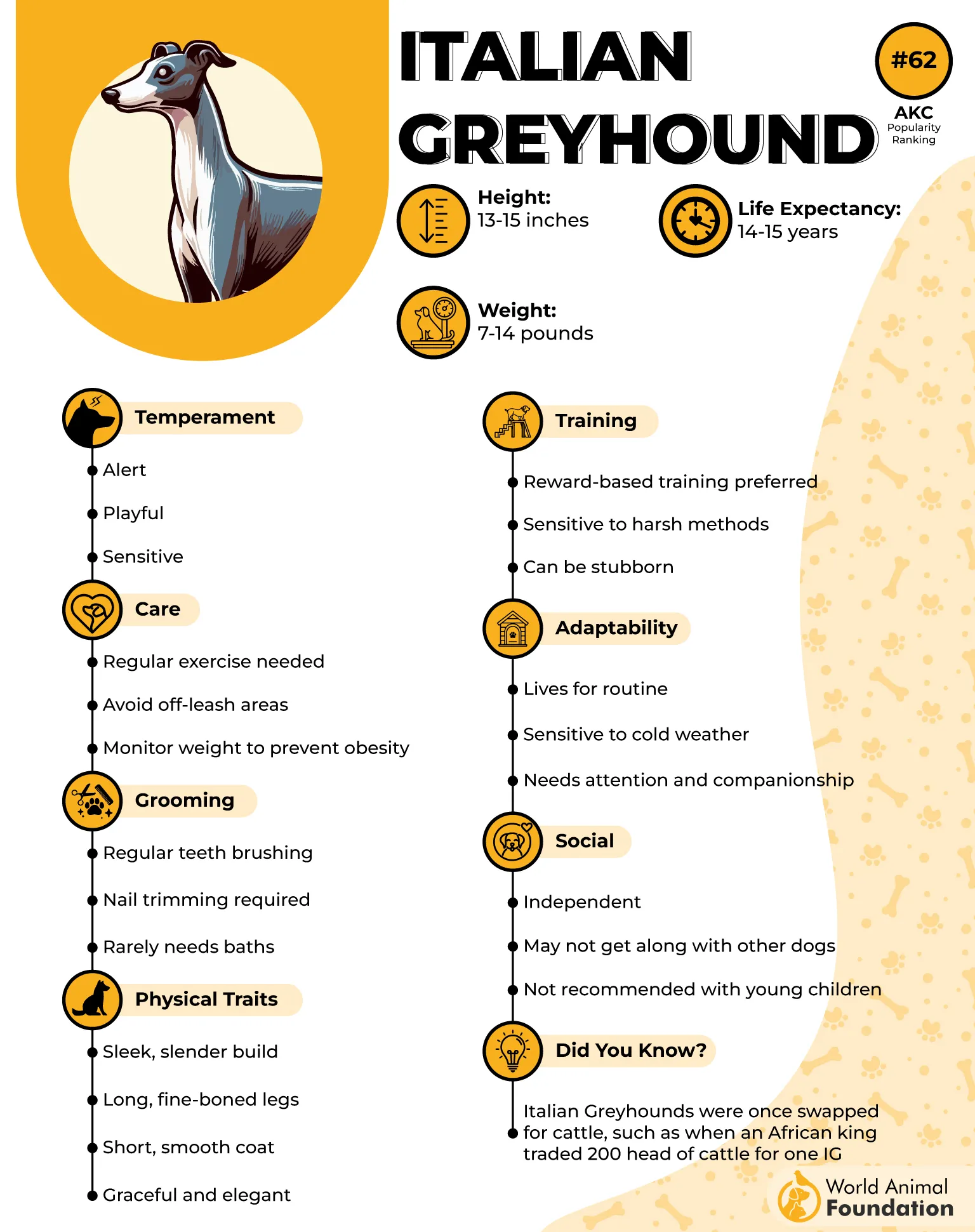
Care Needs
Italian Greyhounds have low-maintenance grooming needs thanks to their short, fine coat, but their slender bodies and minimal insulation mean they chill easily—sweaters and coats are essential in cooler climates.
They do best in calm, patient households, responding well to gentle training and positive reinforcement. Because they are prone to separation anxiety, they need a home where someone is often present to provide companionship and structure.
Fun Fact: Italian Greyhounds were a favorite among European royals, including Queen Victoria, and their refined charm continues to win hearts today.
4. Pug
The Pug, also known as the Mops in Germany and Doguillo in Spain, is one of the most iconic members of the Toy Group. Originating in China and later adored by European royalty, these small but sturdy dogs are instantly recognizable for their wrinkled foreheads, short muzzles, and tightly curled tails.
Standing between 10–13 inches and weighing 14–18 pounds, Pugs are known for their affectionate and loyal nature. With a lifespan of 13–15 years, they bring years of companionship, charm, and playful antics to their families.
Care Needs
These small dogs thrive on human companionship and should not be left alone for long stretches. Their brachycephalic (flat-faced) build makes them prone to overheating and breathing issues, so exercise should be gentle and preferably during cooler hours.
Regular cleaning of their facial wrinkles helps prevent skin infections, and consistent dental care is essential. Short walks and indoor play meet their moderate activity needs, but portion-controlled meals are vital to avoid obesity.
Did you know? Pugs once served as companions to Chinese emperors and even became the mascot of Holland’s House of Orange after one reportedly saved Prince William of Orange from an assassination attempt.
5. Golden Retriever
The Golden Retriever, one of the world’s most beloved breeds, was developed in 19th-century Scotland as a gundog and water retriever. Known for their lush, golden coats and friendly temperament, Goldens typically stand 21.5–24 inches tall and weigh between 55–75 pounds, with an average lifespan of 10–12 years.
Their strong work ethic and eager-to-please attitude made them ideal for hunting, but today they are cherished as family pets, service dogs, and therapy animals. Golden Retrievers are famous for their unwavering loyalty.
Care Needs
Golden Retrievers require consistent grooming due to their thick double coat, which sheds year-round and tangles easily behind their ears and legs. Daily exercise is essential, with about two hours of activities like walks, swims, or retrieving games to prevent boredom and destructive behavior.
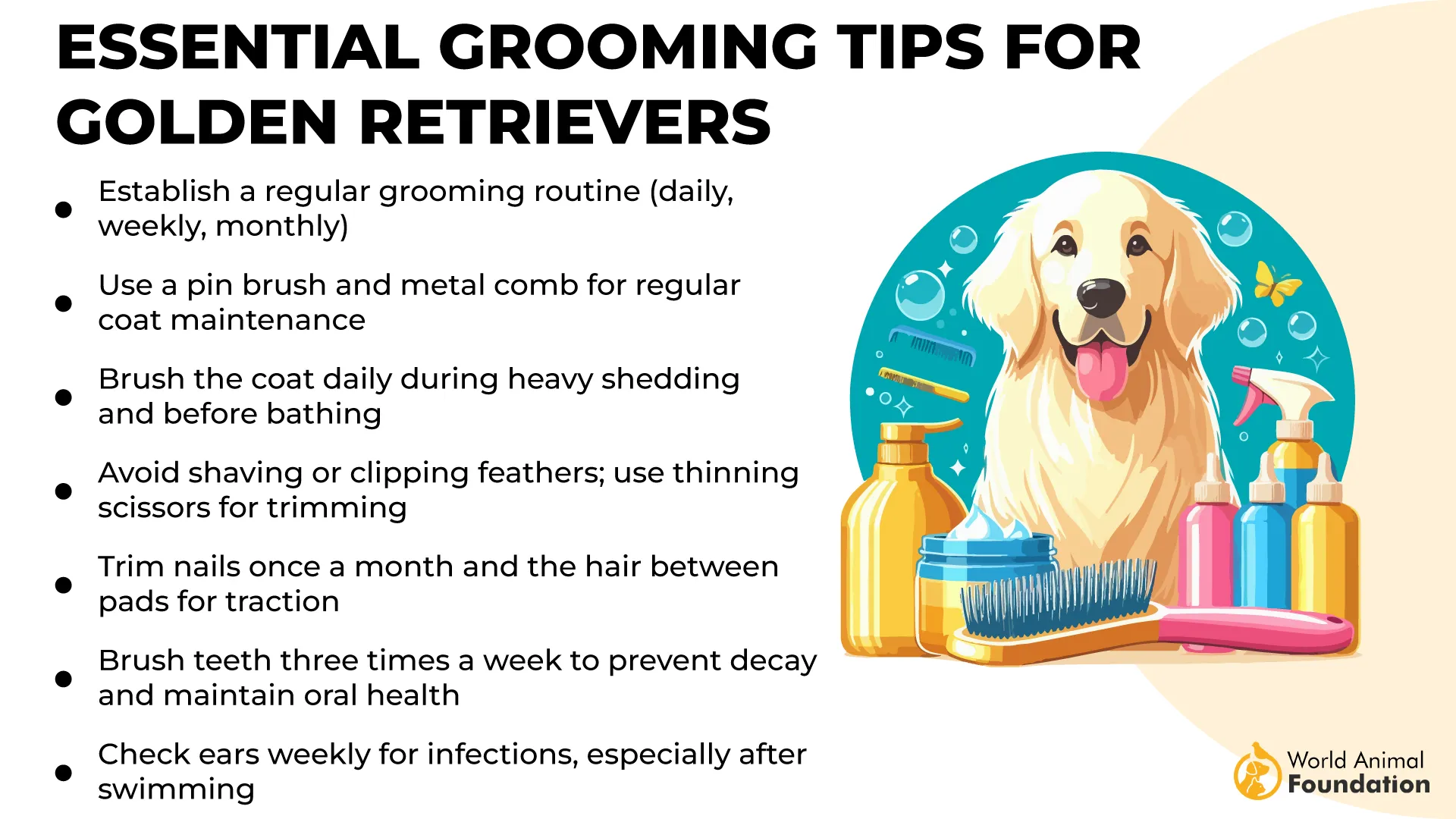
Mental stimulation through training or interactive play helps keep them happy and engaged. Regular brushing, ear checks, and dental care are also important to maintain their overall health.
Did you know? All modern Golden Retrievers trace back to a single litter born in 1868 at Guisachan House in the Scottish Highlands.
6. Border Collie
The Border Collie, often hailed as one of the most intelligent dog breeds, has deep roots in the border region between Scotland and England, where it was developed to herd sheep over rugged terrain.
Known also as the Welsh Sheepdog, Highland Collie, and Scotch Collie, this herding breed stands 18–22 inches tall and weighs 30–55 pounds, with a life span of 12–15 years.
Border Collies are instantly recognizable for their alert expressions, athletic build, and often black-and-white coats, though red-and-white, tricolor, and merle patterns are also seen. They were originally bred for intense, close work with shepherds.
Care Needs
Border Collies thrive when their sharp minds and boundless energy are properly channeled. They require at least two hours of daily exercise, including activities like hiking or agility training, to prevent boredom and restlessness. Their keen responsiveness makes them highly trainable, but they can also become anxious if left alone too long.
Mental stimulation—puzzle toys, obedience games, and tasks—keeps them balanced. Grooming is moderate; their coats need brushing a few times a week, and routine health checkups can help catch genetic issues common to the breed, like hip dysplasia.
Fun Fact: Chaser, a Border Collie, was dubbed the “world’s smartest dog” for recognizing over 1,000 object names.
7. Labrador Retriever
The Labrador Retriever, affectionately known as the “Lab,” is one of the world’s most beloved breeds—and for good reason. Originating in Newfoundland and brought to England in the 1800s, Labs were bred as working gun dogs, excelling in retrieving game for hunters.
Standing between 21.5 to 24.5 inches tall and weighing 55 to 80 pounds, their sturdy build and famously “otter-like” tail are signature traits. Labs are part of the Sporting Group and typically live 10–12 years, offering years of loyalty and affection. They are known for their friendly demeanor, intelligence, and eagerness to please.
Care Needs
Labrador Retrievers thrive on interaction and inclusion, so being part of daily family life is essential. They require at least two hours of exercise daily—long walks, swims, or games of fetch keep them healthy and provide enough mental stimulation.
Because they dislike long periods of solitude, Labs may develop separation anxiety if left alone too often. A structured routine, social time with other dogs, and proper training will keep their eager-to-please temperament balanced.
Did you know? In 2001, a yellow service Lab named Endal saved his disabled owner’s life by retrieving his phone, covering him with a blanket, and even seeking help, earning the title “Dog of the Millennium.”
Conclusion
Among purebred dogs, cavalier king charles spaniels, shih tzus, and French bulldogs are classic velcro dog breeds, happily trailing their favorite person from room to room. Even in apartment living, these companions form strong bonds, weaving themselves into daily routines with other pets and humans alike.
Apartment dwellers should remember that although French bulldogs and shih tzus need moderate play, a high‑energy German shepherd requires much exercise to stay active. By balancing enrichment toys, short training sessions, and calm cuddle breaks, dogs thrive emotionally and physically, ensuring that every footstep you take is matched by four eager paws.


